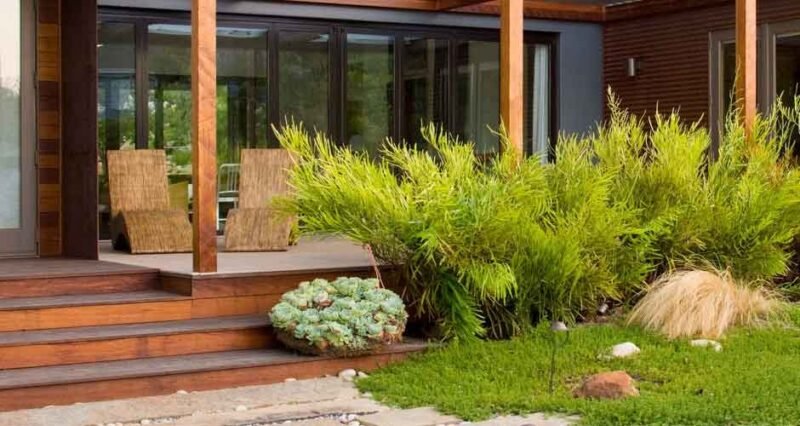
In recent years, the importance of sustainable living has taken center stage, prompting individuals to reconsider their lifestyle choices and adopt practices that have a positive impact on the environment. One area where this shift is gaining momentum is gardening. Sustainable gardening not only benefits the planet but according to Ardent Trust Management team, this also allows individuals to create beautiful, thriving spaces that coexist harmoniously with nature.
In this comprehensive guide, we will explore the principles of sustainable gardening, focusing on the use of composite materials for constructing eco-friendly garden beds and fencing. We’ll delve into the benefits of composite materials, examine their environmental impact, and provide practical tips for creating a sustainable garden that promotes biodiversity and minimizes ecological harm.
Understanding Sustainable Gardening
Sustainable gardening goes beyond merely growing plants; it encompasses a holistic approach that considers the environmental, social, and economic aspects of gardening practices. The goal is to minimize the negative impact on the environment while promoting biodiversity, conservation, and long-term ecological balance.
Key Principles of Sustainable Gardening:
Water Conservation: Sustainable gardens prioritize water conservation through the use of efficient irrigation systems, rainwater harvesting, and drought-resistant plant varieties.
Soil Health: Maintaining healthy soil is crucial for sustainable gardening. Practices such as composting, mulching, and avoiding synthetic chemicals help enhance soil fertility and structure.
Biodiversity: Encouraging a diverse range of plants and creating habitats for beneficial insects and wildlife contribute to the overall health of the garden ecosystem.
Energy Efficiency: Sustainable gardens aim to reduce energy consumption by utilizing energy-efficient tools, incorporating renewable energy sources, and maximizing natural light.
Waste Reduction: Minimizing waste through recycling, composting, and repurposing materials is a fundamental principle of sustainable gardening.
Composite Materials in Sustainable Gardening
Composite materials, made from a combination of recycled plastics and wood fibers, have gained popularity in the construction of garden beds and fencing due to their numerous eco-friendly benefits. These materials offer a sustainable alternative to traditional wood, helping reduce deforestation and minimizing the environmental impact associated with harvesting natural resources.
Advantages of Composite Materials in Gardening:
Durability: Composite materials are resistant to rot, decay, and insect damage, ensuring a longer lifespan compared to traditional wood. This durability reduces the need for frequent replacements, minimizing the overall environmental footprint.
Recycled Content: Many composite materials incorporate recycled plastics and wood fibers, diverting waste from landfills and reducing the demand for virgin materials. This recycling aspect contributes to a circular economy and resource conservation.
Low Maintenance: Composite garden beds and fencing require minimal maintenance, eliminating the need for harmful chemical treatments or frequent replacements. This low-maintenance characteristic aligns with sustainable gardening practices.
Water Resistance: Unlike natural wood, composite materials are water-resistant, preventing warping or rotting. This feature enhances the longevity of garden structures and reduces the consumption of additional resources for replacements.
Versatility: Composite materials offer design versatility, allowing gardeners to create aesthetically pleasing structures that suit their preferences. The ability to customize garden beds and fencing contributes to the creation of unique, eco-friendly spaces.
Creating a Sustainable Garden with Composite Materials
Now that we understand the benefits of composite materials, let’s explore practical steps for incorporating them into a sustainable garden. Whether you’re a seasoned gardener or a novice, these guidelines will help you establish an eco-friendly outdoor space.
Evaluate Your Garden Space:
Assess the available sunlight, soil quality, and drainage in your garden.
Identify areas suitable for composite garden beds and fencing based on these conditions.
Choose Sustainable Composite Materials:
Research and select composite materials with a high percentage of recycled content.
Look for products that have undergone third-party certifications indicating their eco-friendly attributes.
Plan Your Garden Design:
Determine the layout of your garden beds and fencing, considering the natural flow of the space.Take advantage of the design flexibility offered by composite materials to create visually appealing structures.
Prepare the Soil:
Enhance soil health by incorporating compost and organic matter.
Avoid the use of synthetic fertilizers and pesticides, opting for natural alternatives.
Install Composite Garden Beds:
Assemble composite garden beds following the manufacturer’s instructions.
Ensure proper spacing and alignment to optimize plant growth and accessibility.
Select Sustainable Plant Varieties:
Choose plants that are well-suited to your climate and soil conditions.
Opt for native plants to promote biodiversity and support local ecosystems.
Implement Water-Saving Techniques:
Install drip irrigation systems to deliver water directly to plant roots.
Mulch around plants to retain soil moisture and suppress weeds.
Integrate Wildlife-Friendly Features:
Incorporate bird feeders, insect hotels, and other features to attract beneficial wildlife.
Create a balance between cultivated plants and natural elements to encourage biodiversity.
Construct Composite Fencing:
Install composite fencing to define garden boundaries and provide support for climbing plants.
Choose fence designs that allow for air circulation and sunlight penetration.
Practice Sustainable Maintenance:
Regularly inspect and clean composite structures to prevent debris buildup.
Use environmentally friendly cleaning solutions to maintain the appearance of garden beds and fencing.
Conclusion
As we strive towards a more sustainable future, our gardening practices play a significant role in shaping the world around us. By embracing the use of composite materials for garden beds and fencing, we can create eco-friendly spaces that harmonize with nature while minimizing our ecological footprint. Check out the range of garden beds Frame It All have to offer if you’re looking for and eco-friendly choice.
By combining thoughtful garden planning, the use of recycled materials, and a commitment to sustainable practices, we can transform our outdoor spaces into thriving, environmentally conscious havens. Through these efforts, each of us can contribute to the larger movement towards a greener, more sustainable world—one garden at a time.

